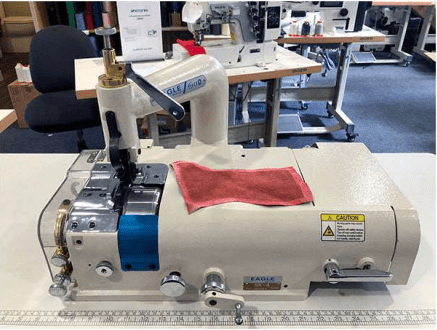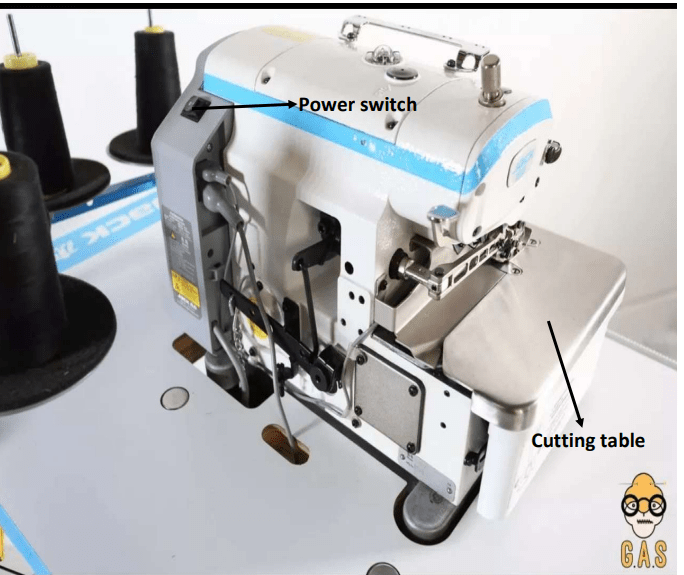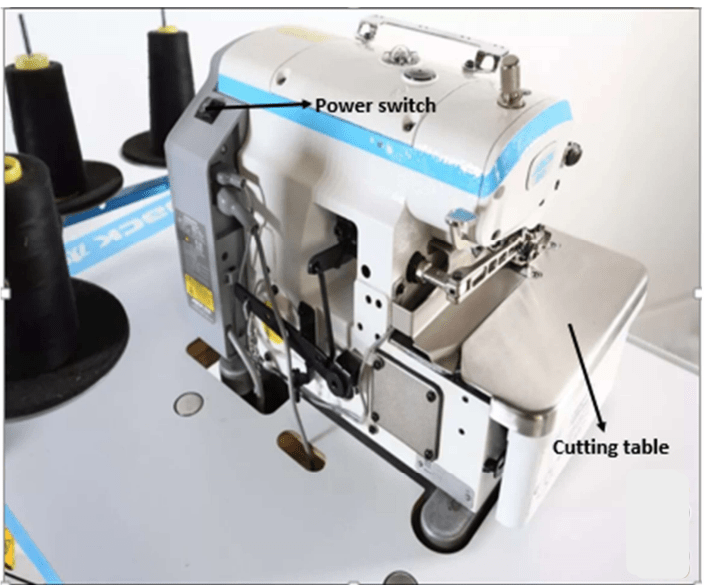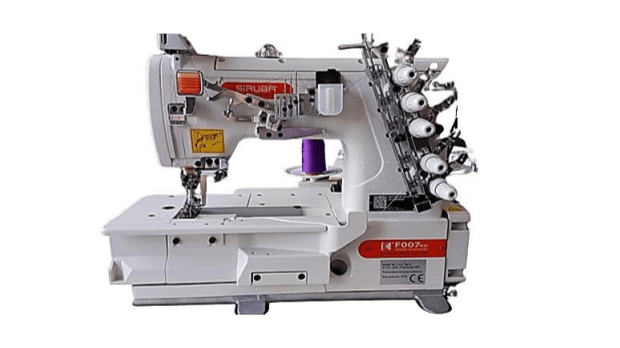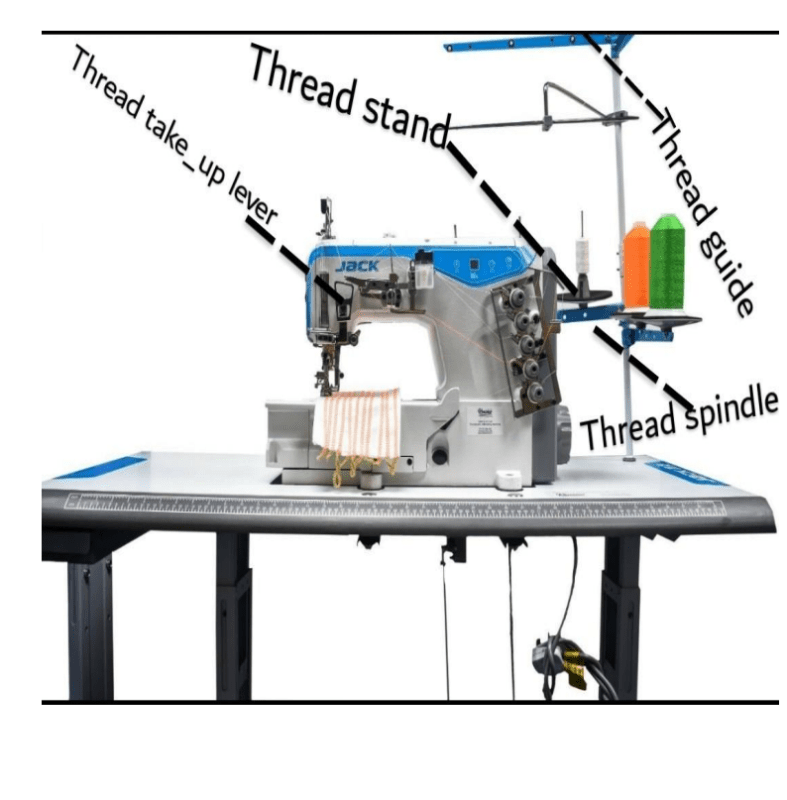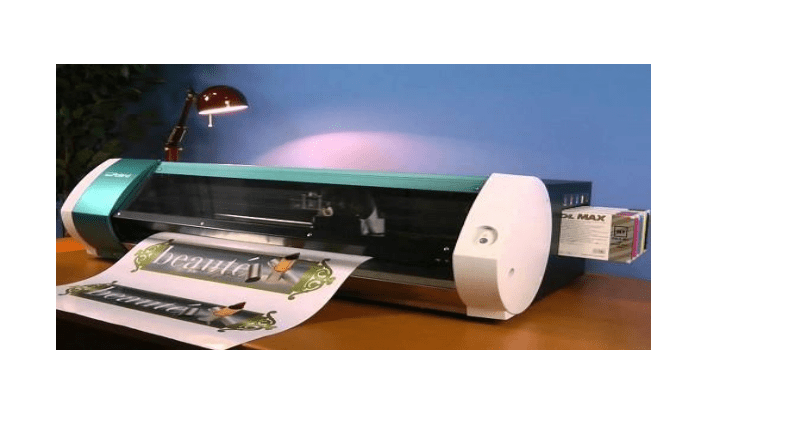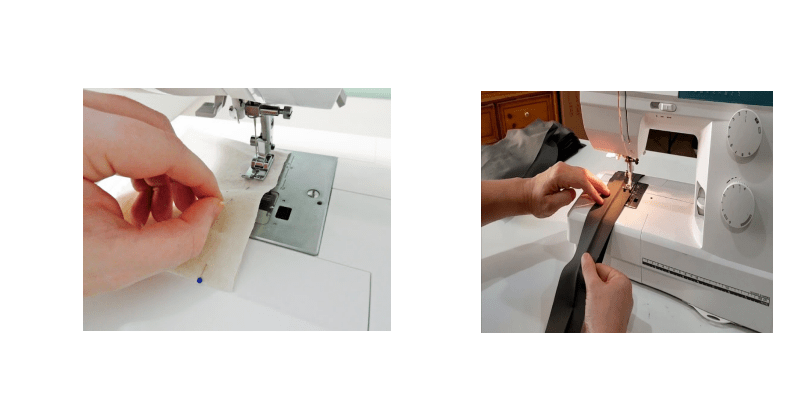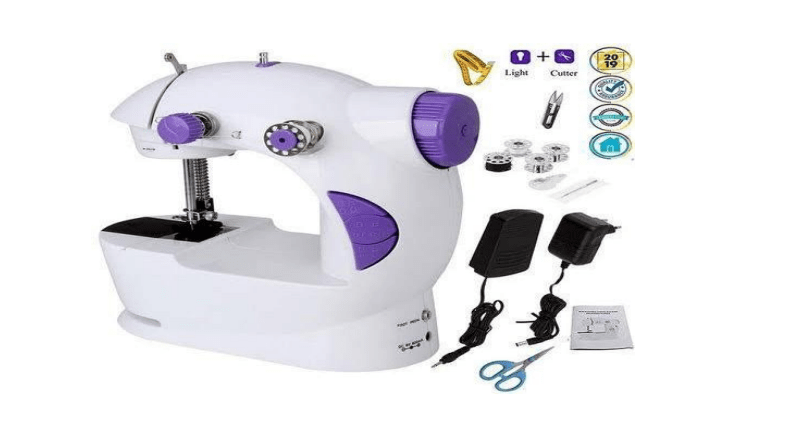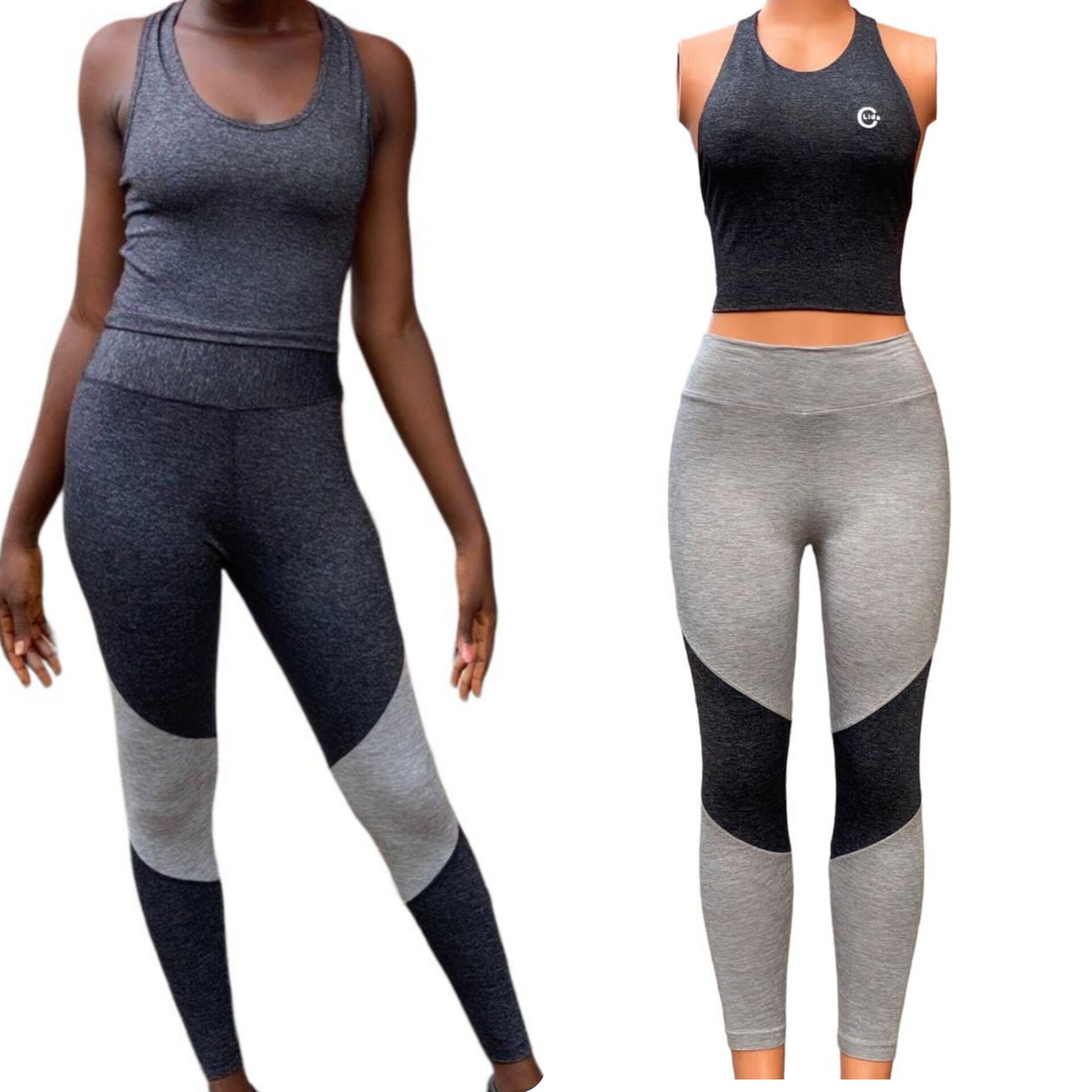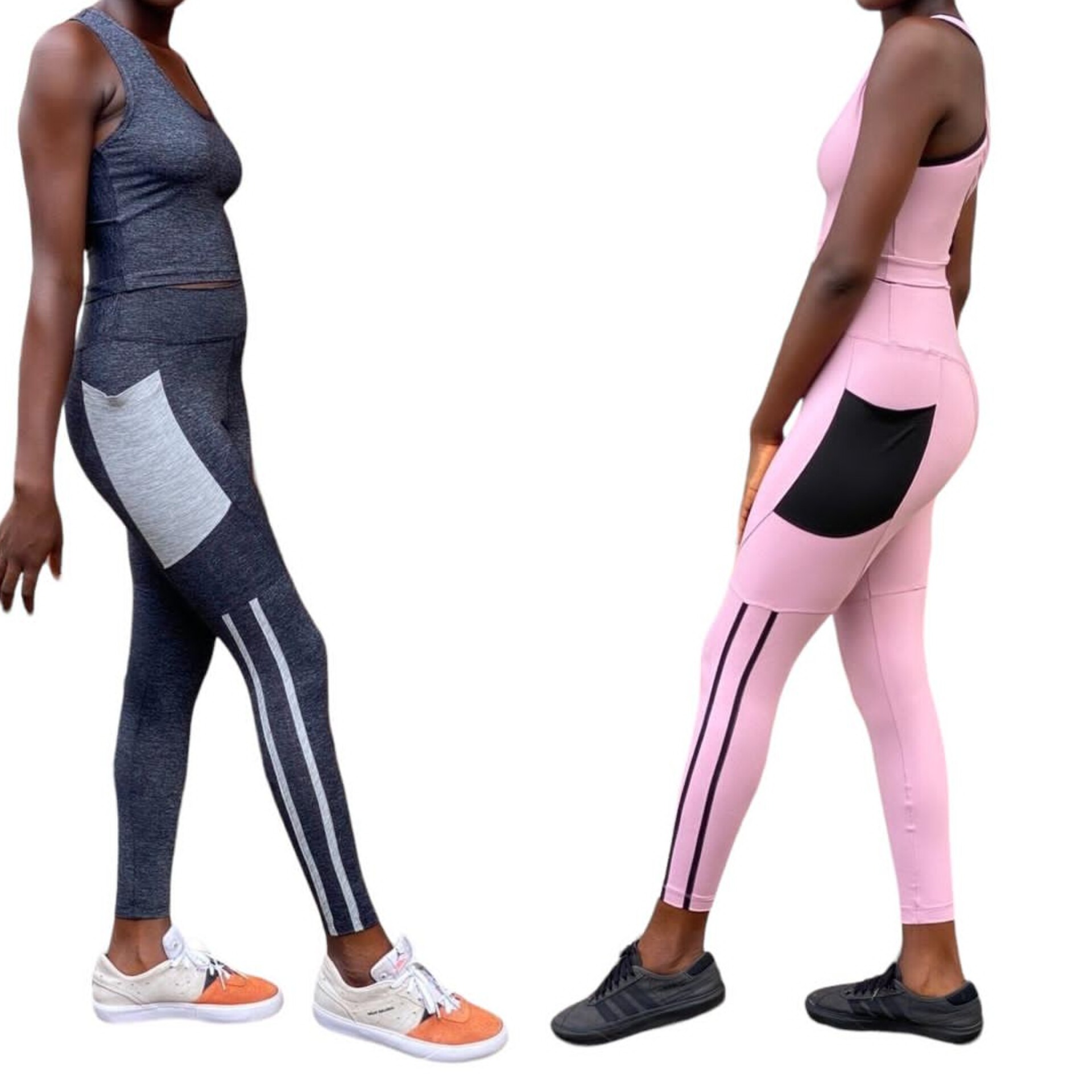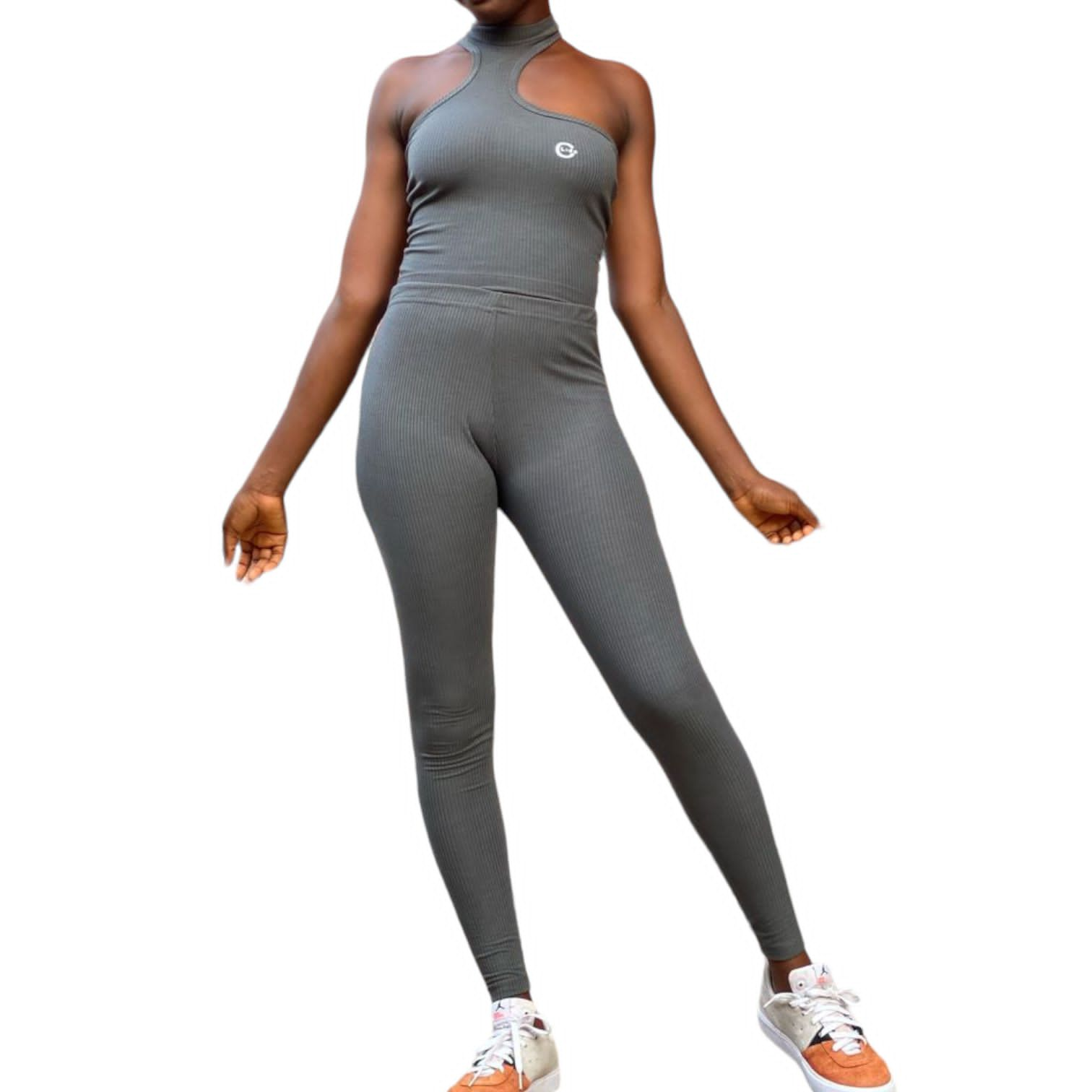32 minute read
let go!
Introduction
Skiving technology is an art that can be traced
back to the early 20th century, a time when the
whole process of skiving was done manually and
where the machine consisted of only a rotating
blade and a stationary knife bed with the sole intent
of belting and handling other leather vessels.
The leather industry hadn’t experienced any
other invention as impactful as the skiving machine
when it was first developed by the hands of Julius
Wilhelm in the Pitler household.
Industries like the leather goods, automotive, and
furniture industries have over time continued to
develop the art of using the skiving machine to
create smooth surfaces for the finishing edges of
various materials.
This guide gives a piece of detailed knowledge
about the definition, diagrammatic description, uses
and benefits, maintenance, and safety precautions
of the skiving machine.
A skiving (scarfing) machine is a specialized
equipment designed to thin materials such as
leather or furniture to achieve a desired thickness
and create tapered edges. It utilizes a cutting
mechanism to remove layers from the material’s
surface, resulting in smooth and even thickness
throughout.
The level of precision the skiving machine offers
in terms of smoothening the surface of various
materials to achieve the desired thickness and make
tampered edges on materials.
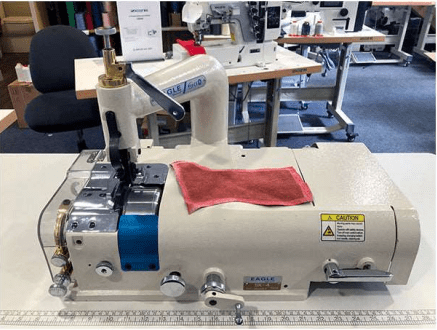
This image
shows the skiving machine in the smoothening
process of a leather piece.
Break-Down Of The Skiving Process
Skiving is a delicate art that involves the skiving
machine being set up correctly and in good working
condition, including checking the blade sharpness,
adjusting the cutting depth, and ensuring proper
alignment of the material feed before the whole
skiving process begins.
Thereafter choose the appropriate material for
skiving based on the specific requirements of your
project, always ensure that the material is clean,
free from any defects, and properly sized for the
skiving machine to give a flawless result.
Adjusting the settings of the skiving machine
according to the thickness and type of material
being skived follows up after the appropriate
material has been picked, which includes adjusting
the feed speed, and blade pressure to achieve the
desired skiving results.
Following up the material to be skived on the
feeding table of the skiving machine is properly
positioned, ensuring that it is properly aligned and
secured in place to avoid errors.
The main skiving process is then initiated by
turning on the skiving machine, the material will be
fed through the machine, and the skiving blade will
remove a thin layer of material from the edge,
creating a tapered or thin profile.
After a while, the skiving machine is closely
monitored to ensure that the material is being
skived evenly, and necessary adjustments to the
machine settings or material positioning can be
made to correct any issues that may arise.
Once the skiving process is complete, carefully
inspect the skived material for any defects or
inconsistencies. It is very vital to check the thickness
and taper of the skived edge to ensure that it meets
the desired specifications as it is one of the most
crucial details involved in skiving.
Depending on the requirements of your project,
you may need to perform additional finishing
touches on the skived material, such as trimming
any excess material or smoothing the skived edge
with sandpaper or a burnishing tool for the final
result.

A Full Diagram Of The Skiving Machine
This diagram shows how the skiving machine looks
in a complete display
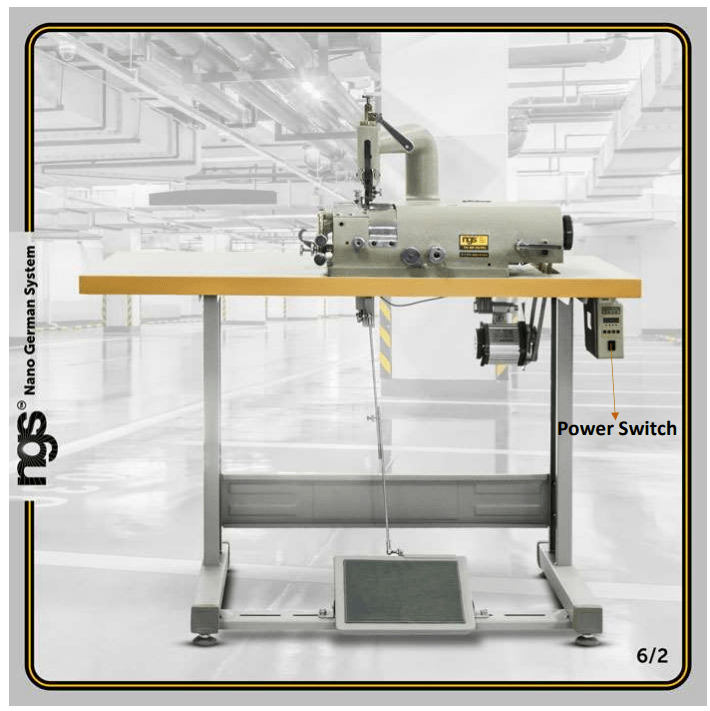
The drawing below displays a breakdown of the
internal look of the components of the skiving
machine.

The skiving machine is a sophisticated machine
that comprises parts that make the skiving process
possible.
These components are well explained below:
1.Feed Roller: The feed roller is a major component
of the skiving machine that assists in guiding the
material through the machine, ensuring a
consistent feed rate.
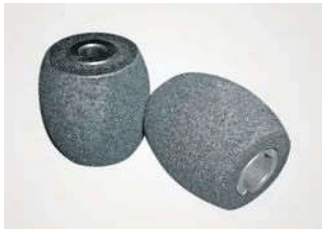
This is a diagram of
the feed roller component in the skiving
machine compartment, it is partially hidden
from the external view of the skiving machine.
- Presser Foot: The component of the skiving
machine responsible for the function of holding
the material in place during the skiving process,
preventing slippage, and determining the width
and angle of skiving done is known as the presser
foot.
3.Cutting Blade: The cutting blade is the primary
component responsible for thinning the material.
It can be adjusted to achieve different thickness
levels required for the project at hand.
4.Thickness Adjustment Dial: The thickness
adjustment dial allows users to control the depth
of the cut, enabling precise skiving according to
specific requirements to achieve top-notch
results.
5.Power Switch: The power switch is the
component of the skiving machine that controls
the operation of the skiving machine, allowing
users to turn it on or off as needed.
Uses of the Skiving Machine
The uses of the skiving machine are vital pillars
that the whole basis of leather, automobile, and
furniture is based upon, some of the uses are listed
accordingly below:
In Leather industry
- Thinning Leather Edges: The skiving machine is
used to thin the edges of leather pieces, making
them more flexible and reducing bulkiness.
This is especially important when creating
leather goods like bags, wallets, and belts which
are mostly required to be portable and durable.

The image above shows a skiving machine
thinning a leather piece.
- Precise Seams: By skiving the edges of leather
pieces before sewing them together, the skiving
machine helps create precise and clean seams.
This ensures a professional and polished look
for leather products giving the leather products a
better visual value. - Reducing Bulkiness: Skiving is also used to
reduce the thickness of certain areas of leather,
such as when creating pockets or folds.
This helps maintain a consistent thickness
throughout the leather piece.
In Automobile Industry - Skiving Leather Upholstery: The skiving machine
is used to skive the edges of leather upholstery
used in car interiors.
This process ensures that the edges are smooth
and seamless, providing a high-quality finish to
the upholstery.
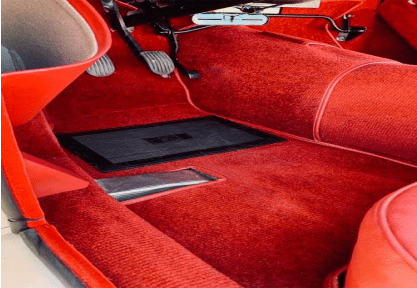
An image of
the interior of a car skived to perfection.
- Seamless Integration: Skiving the edges of
leather pieces used in automobile upholstery
allows for seamless integration with other
components.
It helps achieve a neat and professional
appearance in these components such as stitching
or attaching to the car seats.
In Furniture Industry: - Skiving Leather Upholstery: Similar to the
automobile industry, skiving machines are used in
the furniture industry to skive the edges of
leather upholstery.
This ensures that the edges are smooth and
clean, enhancing the overall appearance of the
furniture.
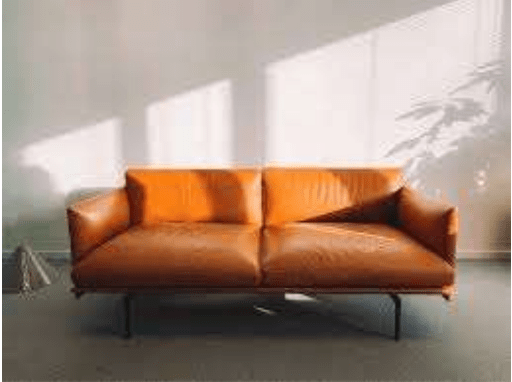
Sophisticated designs can now be created using
the skiving machine.
7. Creating Clean Edges: Skiving machines help
create clean and precise edges on leather pieces
used in furniture upholstery.
This is crucial for achieving a polished and
refined look in furniture design.
Benefits of the Skiving Machine
The benefits of the skiving machine range from
industrial benefits to the benefits on the leathers,
furniture, and other materials in which it is used.
These benefits are well listed and explained in
detail below:
1.Improved Product Quality: Skiving machines
enable precise thinning and tapering of materials,
resulting in superior product quality that can fully
compete in the market space.
Whether it’s leather, fabric, or foam, skiving
ensures uniform thickness and smooth edges,
enhancing the overall appearance and
functionality of the end products.
2.Customization and Innovation: Skiving machines
enable manufacturers to create custom-designed
products with unique features and finishes.
Innovation and customization are facilitated by
skiving machines, whether it be through the
addition of decorative elements to leather goods
or the creation of specialized components for
automotive interiors.

are made delicately through the process of skiving.
3. Enhanced Efficiency and Productivity: By
automating the skiving process, these machines
significantly improve efficiency and productivity in
manufacturing operations.
Skiving machines can handle large volumes of
materials quickly and consistently, reducing
production time and labor costs.
4. Versatility and Flexibility: Skiving machines are
versatile tools that can be adapted to a wide
range of materials and applications.
They can skive leather for shoe uppers, fabric
for garments, foam for upholstery, and much
more.
This versatility makes skiving machines
valuable assets for diverse industries.
5. Expanded Market Opportunities: With the
capabilities of skiving machines, businesses can
explore new market opportunities and expand
their product offerings.
Diversification and growth are enabled by
skiving machines, whether it be through targeting
niche markets with specialized products or
catering to mass consumer demand.
6. Meeting Industry Standards: Skiving machines
help businesses meet industry standards and
regulations for product quality and safety.
By consistently producing materials with
precise thickness and uniform edges, businesses
can ensure compliance with relevant standards
and certifications.
7. Cost Savings: The efficiency gained from using
skiving machines translates into cost savings for
businesses.
Reduced labor requirements, decreased
material waste, and improved throughout all
contribute to lower production costs thereby
benefitting the industry as a whole.
Maintenance of the Skiving
Machine
Maintaining a skiving machine is crucial to ensure
its optimal performance and longevity in which
regular maintenance helps prevent breakdowns,
ensures consistent quality output, and prolongs the
lifespan of the machine.
Maintenance procedures that should be taken to
protect the skiving machine are well explained
below.
1.Regular Cleaning: Clean the machine regularly to
remove dust, debris, and residue from the cutting
blade and other components.
Use a soft brush or cloth to gently wipe down
the machine and ensure it reaches places where
dirt could easily get packed and affect the
machine after each use.
2.Blade Sharpening: Check the sharpness of the
cutting blade consistently and sharpen or replace
it as needed to maintain cutting precision.
Dull blades can result in uneven skiving and
may damage the material or affect the whole
skiving process.
3.Lubrication: Apply lubricating oil to moving parts
and components of the skiving machine to reduce
friction and prevent wear which could prevent the
machine from reaching its maximum potential.
Follow the manufacturer’s recommendations
for the type and frequency of lubrication.
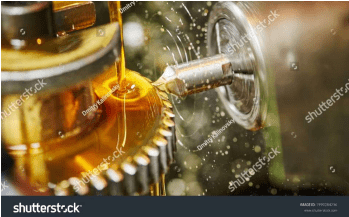
machine component being lubricated.
4.Alignment Check: Alignment check involves
periodically checking the alignment of the cutting
blade and other components to ensure they are
properly aligned for accurate skiving.
Adjust or realign components as needed to
maintain optimal performance.
5.Electrical Safety: Inspect the power cord, plug,
and electrical connections regularly for any signs
of damage or wear, and in case of any, replace
damaged cords or components immediately to
prevent electrical hazards.
Safety Precautions to be taken while
using the skiving machine
These safety precautions should be taken to
ensure the safety of the users of the skiving
machine which are:
1) Read the Manual: The first and most important
precaution is to familiarize yourself with the
manufacturer’s instructions and operating manual
before using the skiving machine.
Follow all recommended procedures and safety
guidelines in handling all components of the
skiving machine to prevent accidents while
working.
2)Wear Protective Gear: Always wear appropriate
personal protective equipment, including safety
glasses, gloves, and closed-toe shoes, when
operating the skiving machine to protect against
injuries from flying debris or accidental contact
with moving parts.
3)Use Proper Technique: Using proper feeding
techniques and applying consistent pressure
when guiding the material through the machine
is another safety precaution to ensure a smooth
and accurate skiving process.
Avoid forcing the material through the machine,
as this can cause damage to the blade or material
or even the user of the skiving machine.
4)Keep Hands Clear: Always ensure to keep your
hands and fingers away from the cutting blade
and other moving parts of the machine during
operation.
Avoid reaching into the skiving machine’s
moving parts while it is in motion to prevent
accidents.
5)Supervise Properly: Ensure that operators are
properly trained and supervised when using the
skiving machine, especially if they are
inexperienced or unfamiliar with the equipment.
Summary:
Firstly, we learnt that skiving is also known as
scarfing and a skiving machine is a specialized
machine used to thin out the surface of leather and
furniture to achieve a perfect finishing touch.
The skiving process was also said to involve
choosing the appropriate material, adjusting the
settings to fit the required project, setting the
material on the skiving machine, and then initiating
the whole skiving process by turning on the skiving
machine all to achieve a perfect end result.
In this manuscript, we also learnt that the uses of
the skiving machine vary among industries like the
leather, automobile, and furniture industries for
various vital purposes which include the creation of
precise seams, intricate interior designs on the
interior of automobiles, and lastly fine finishing of
furniture edges
Lastly, safety precautions and maintenance
practices that should be adhered to avoid damage
to the skiving machine, injuries to users, or damage
to the design or materials that are being worked
upon include regular cleaning, alignment checks,
electrical precautions, using appropriate gears,
reading the manual before using the skiving
machine, and proper supervisions were all fully
explained in this manuscript.
Multi-choice Questions
Part A
Using the diagram below answer questions 1-8 by
naming the components labeled A-H
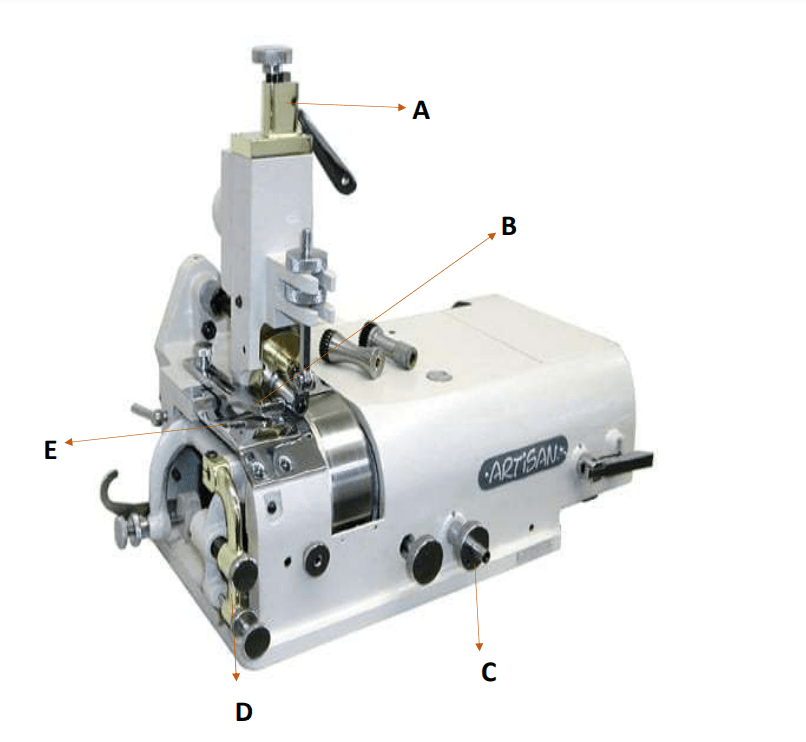
1.The component labeled A is known as ____________A) Heat Resistant Handle B) Feed roller C) Cutting blade D) Handle for presser foot
2.The component labeled B is known as __________
A) Cutting blade
B) Heating Tray
C) Presser Foot
D) Feed Adjustment handle
3.The component labeled C is known as _____________ A) Rubber stand B) Feed Adjustment handle C) Working button D) Thickness Adjustment dial
4.The component labeled D is known as____________
A) Feed Adjustment device
B) Power Switch
C) Rubber Pad
D) Feed roller
5.The component labeled E is known as ____________
A) Presser Foot
B) Feed Adjustment dial
C) Feeding rate handle
D) Rubber Pad
Part B :
Pick the appropriate answer from the options below
6)Who is credited with developing the skiving
machine?
A) Julius Wilhelm
B) Pitler household
C) Karl Benz
D) Leonardo da Vinci
7)What are some industries that have benefited
from skiving machines?
A) Textile and pharmaceutical
B) Leather, automobile, and furniture
C) Food and construction
D) Electronics and aviation
8)Skiving technology can be traced back to which
century?
A) 18th century
B) 19th century
C) 20th century
D) 21st century
9)Which component of the skiving machine assists
in guiding the material through the machine?
A) Cutting Blade
B) Presser Foot
C) Thickness Adjustment Dial
D) Power Switch
10) What is another term for skiving?
A) Cutting
B) Embossing
C) Scarfing
D) Pressing
11) Which industry benefits from skiving in creating
precise seams?
A) Electronics
B) Leather
C) Construction
D) Agricultural
12) What is one of the uses of a skiving machine in
the furniture industry?
A) Adding bulkiness to upholstery
B) Creating imprecise seams
C) Thinning leather edges
D) Decreasing integration
13) Why is skiving important in the automobile
industry?
A) To create bulkier upholstery
B) To reduce integration with other components
C) To achieve a polished finish in car interiors
D) To increase production time
14) What should operators wear when using a
skiving machine?
A) Shorts and sandals
B) Safety glasses, gloves, and closed-toe shoes
C) A hat and scarf
D) Business attire
15) What should operators avoid doing with the
material during the skiving process?
A) Forcing it through the machine
B) Keeping it aligned
C) Adding pressure evenly
D) Picking the appropriate one
16) What is the first and most important precaution
before using a skiving machine?
A) Using proper feeding techniques
B) Wearing protective gear
C) Familiarizing oneself with the operating manual
D) Keeping hands clear of moving parts
17) What is the primary purpose of a skiving
machine?
A) To increase material thickness
B) To create rough edges
C) To thin materials and create tapered edges
D) To emboss patterns
18) The main skiving process is initiated by turning
on the skiving machine and feeding the material
through the machine, allowing the skiving blade
to remove a thin layer of material from the___________
.
A) Top
B) Bottom
C) Edge
D) Center
19) Regular maintenance of the skiving machine
prolongs the ____________of the machine.
A) Lifespan
B) Unproductivity
C) Length
D) Malfunctionality
20) Using proper feeding techniques and applying
consistent pressure when guiding the material
through the machine helps ensure a smooth and
accurate _____________process.
A) Stitching
B) Sewing
C) Skiving
D) Embossing
21) The efficiency gained from using skiving
machines translates into cost savings for
businesses due to reduced labor requirements,
decreased material waste, and improved_____________
.
A) Innovation
B) Quality
C) Throughout
D) Customization
22) The skiving machine is designed to thin
materials such as_____________ .
A) Steel
B) Glass
C) Leather or fabric
D) Concrete
23) What does regular cleaning help prevent in a
skiving machine?
A) Overheating
B) Congestion of dirt in hidden areas
C) Proper functioning of blades
D) Electrical hazards
24) What is the purpose of lubricating a skiving
machine?
A) To increase friction
B) To prevent wear
C) To reduce efficiency
D) To damage the components
25) What should be done to ensure proper
supervision when operating a skiving machine?
A) Operators should be properly trained
B) Operators should be experienced
C) Operators should be familiar with the
equipment
D) All of the above
26) What is the purpose of the thickness
adjustment dial in a skiving machine?
A) To adjust the cutting depth
B) To adjust the feed speed
C) To adjust the blade pressure
D) To adjust the material size
27) What should be done regularly to maintain a
skiving machine?
A) Cleaning
B) Lubrication
C) Alignment checks
D) All of the above
28) What should be done to ensure proper
alignment of the cutting blade and other
components?
A) Regular cleaning
B) Regular Friction
C) Regular alignment checks
D) Regular dulling of the cutting blade
29) Why is blade sharpening important for a skiving
machine?
A) To increase material thickness
B) To decrease production time
C) To ensure cutting precision
D) To prevent electrical hazards
30) Skiving machines precise edges on leather used
in furniture upholstery, which is crucial for
achieving a polished look in furniture ____________.
A) Restoration
B) Manufacturing
C) Sales
D) Styling
31) The skiving machine ensures the edges of
leather pieces are smooth and seamless,
providing a high-quality finish to automotive
____________.
A) Exteriors
B) Interiors
C) Tires
D) Engines
Part C:
Fill in the gap with the appropriate answers in the
blank spaces given below.
32) Skiving machines are used to thin materials to
achieve a desired___________ .
33) The old and manual skiving machine consists of
a rotating blade and a stationary __________.
34) The cutting blade should be regularly__________
to maintain cutting precision.
35) Skiving machines help businesses meet industry___________
and regulations.
36) 1. Skiving machines enable manufacturers to
create custom-designed products with unique
features and ____________.
37) Regular maintenance of the skiving machine is
crucial to ensure its optimal performance, prevent
breakdowns, and ensure consistent quality___________.
38) Applying lubricating oil to moving parts and
components of the skiving machine helps reduce
friction and prevent wear, ensuring the machine
reaches its maximum_______________ .
39) Wearing appropriate personal protective
equipment, including safety glasses, gloves, and
closed-toe shoes, is essential when operating the
skiving machine to protect against injuries from
flying debris or accidental contact with ____________.
40) The skiving machine assists in thinning the
edges of leather pieces, making them more
flexible and reducing __________.
41) The feed roller is a major component of the
skiving machine that assists in guiding the
material through the machine, ensuring a
consistent _______________rate.
42) The skiving machine is designed to thin
materials and create ____________edges.
43) The leather industry experienced a significant
invention with the development of the skiving
machine by_____________ .
44) Skiving machines help maintain a consistent
thickness throughout the leather piece, especially
important when creating leather goods like bags,
wallets, and belts that require both portability
and _____________.
45) In the skiving process, it is vital to carefully
inspect the skived material for any defects or
inconsistencies, checking the thickness and taper
of the skived edge to ensure that it meets the
desired _____________.
46) By consistently producing materials with precise
thickness and uniform edges, skiving machines
help businesses ensure compliance with relevant
industry standards and certifications for product
quality and____________ .
47) The skiving machine helps businesses expand
their product offerings and explore new markets____________.
48) The skiving machine is used to reduce the
thickness of certain areas of leather, such as when
creating ____________ or folds.
49) Skiving machines significantly improve
efficiency and productivity in manufacturing
operations by automating the skiving process and
handling large volumes of materials quickly and
consistently, thereby reducing___________ .
50) The cutting blade is the primary component of
the skiving machine responsible for thinning the
material and can be adjusted to achieve different
thickness levels required for the_____________ at hand.
Instructor’s copy
Answers To Multiple Choice Questions 1-28

Answers To Fill In The Gap Question 29-50
32) Thickness
33) Knife Bed
34) Sharpened
35) Standards
36) Finishes
37) Output
29) C 30) D 31) B
38) Potential
39) Moving Parts
40) Bulkiness
41) Feed
42) Tapered
43) Julius Wilhelm
44) Durability
45) Specifications
46) Safety
47) Opportunities
48) Pockets
49) Production Time
50) Project.

